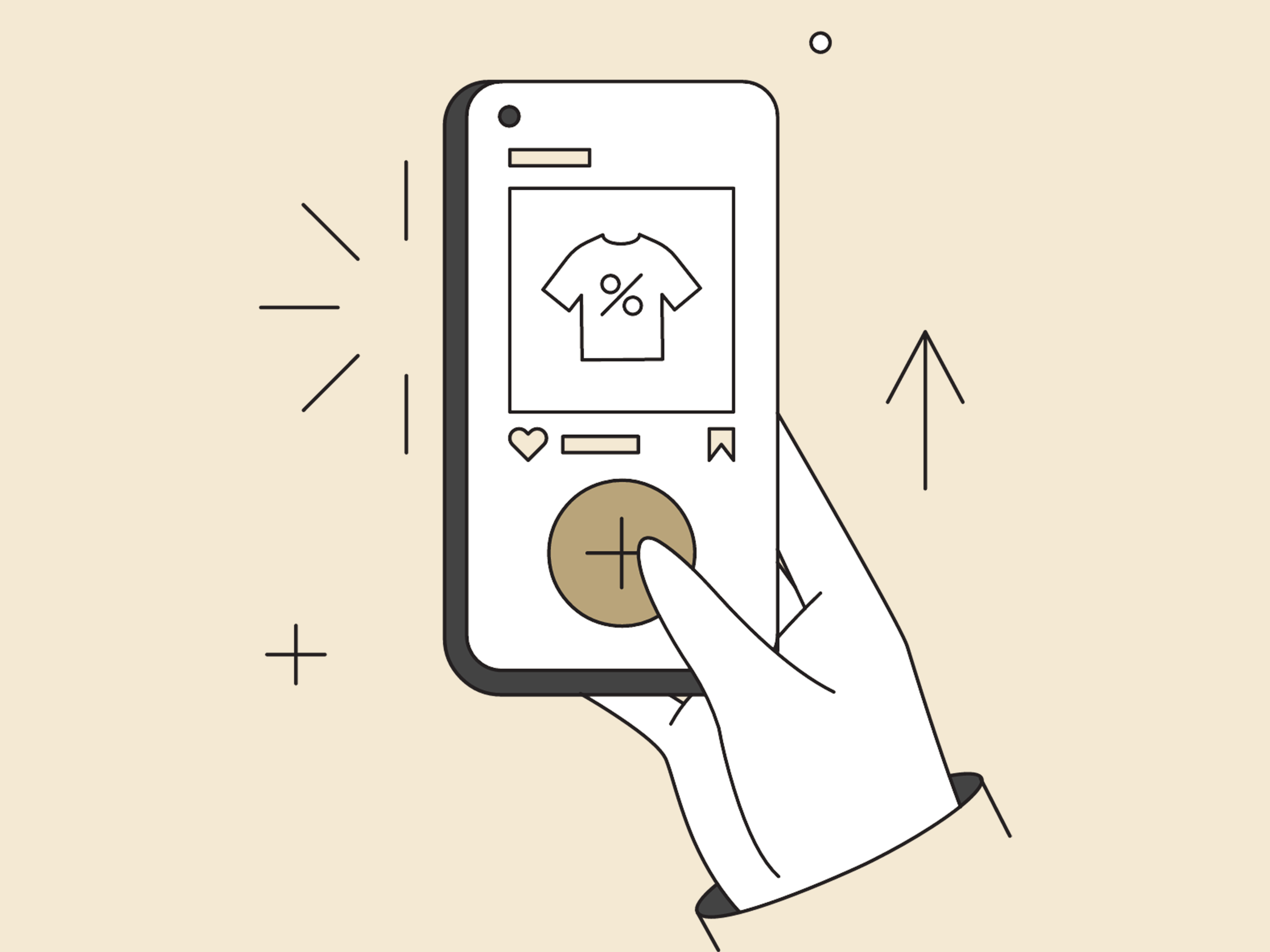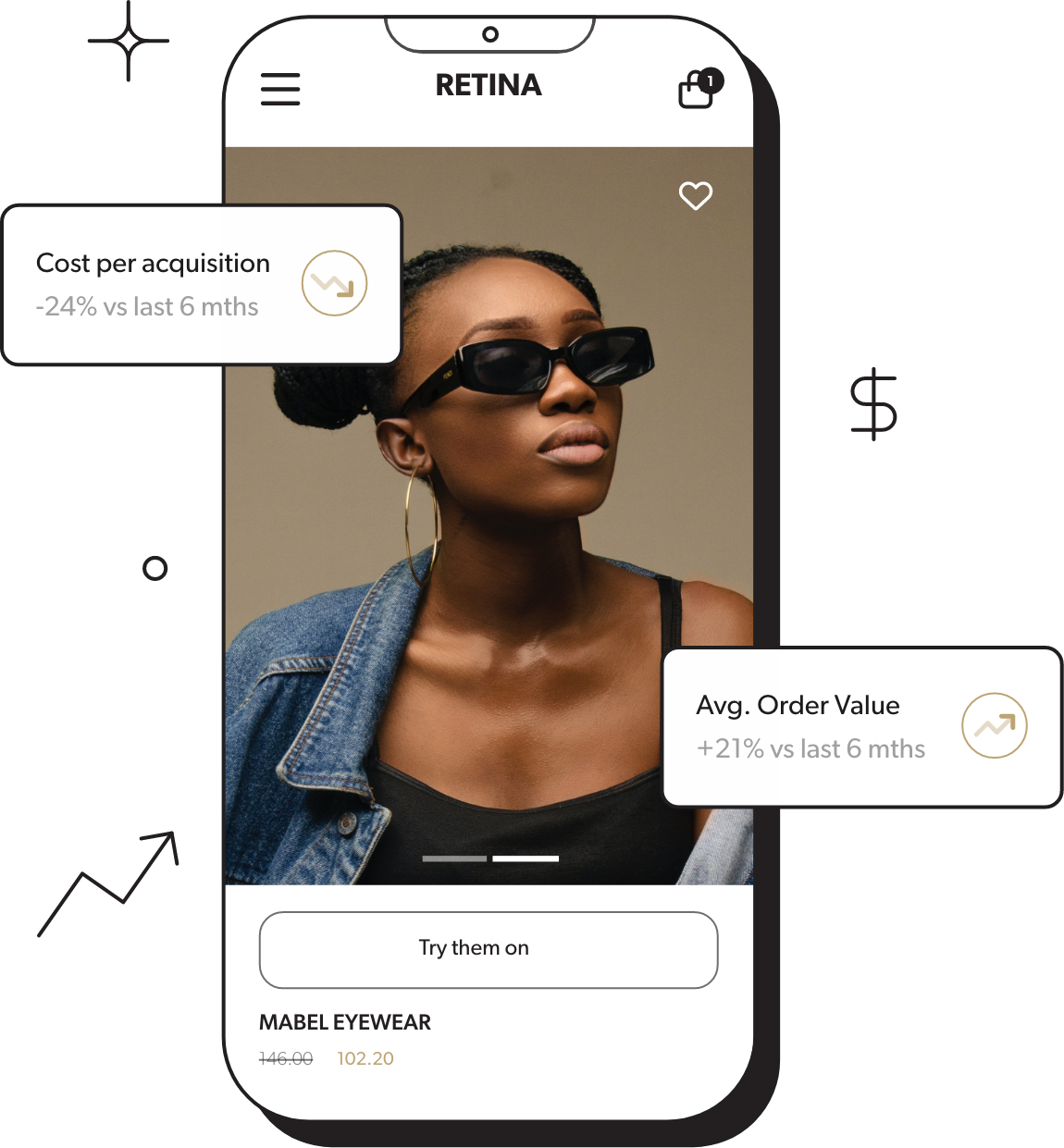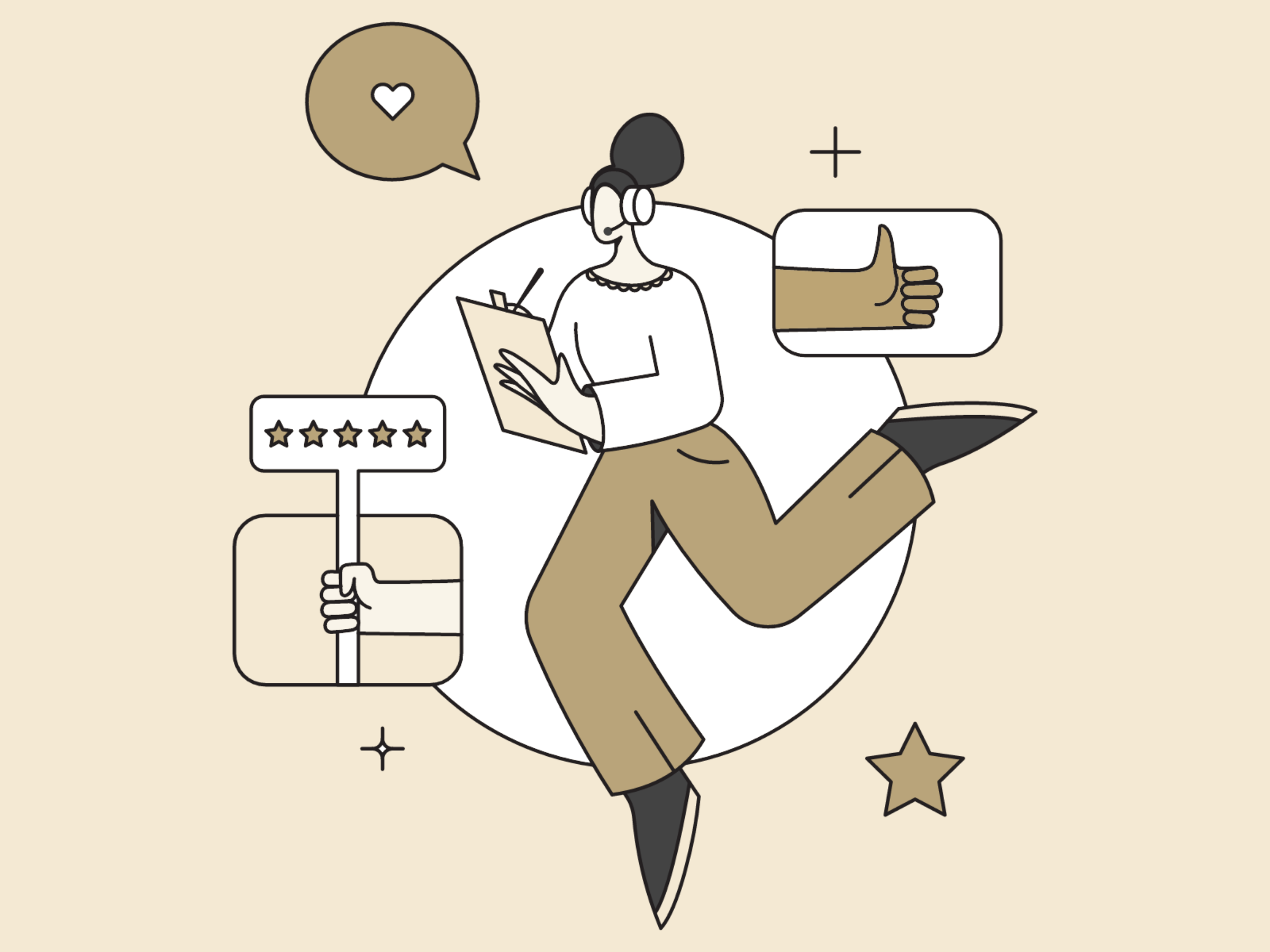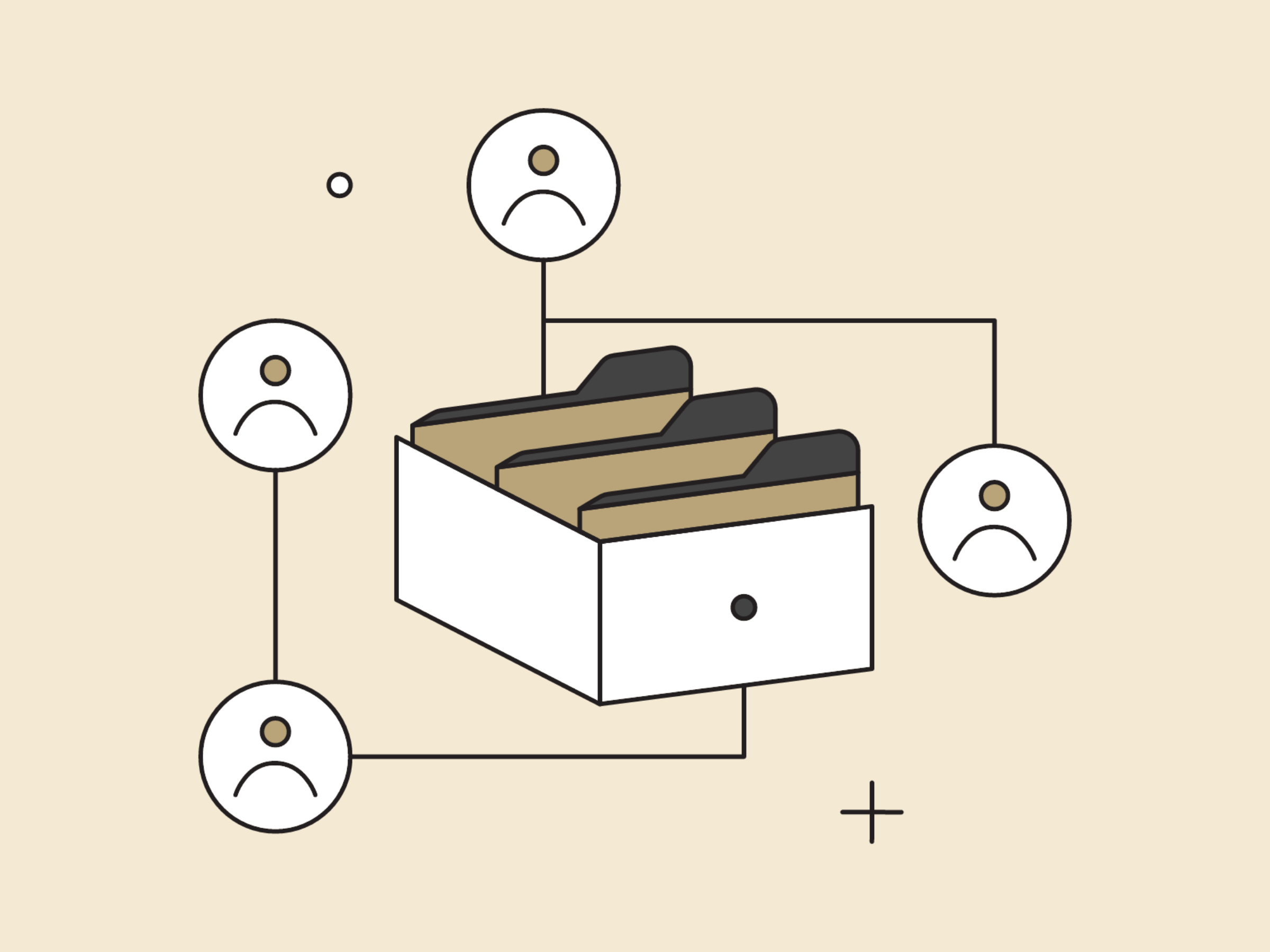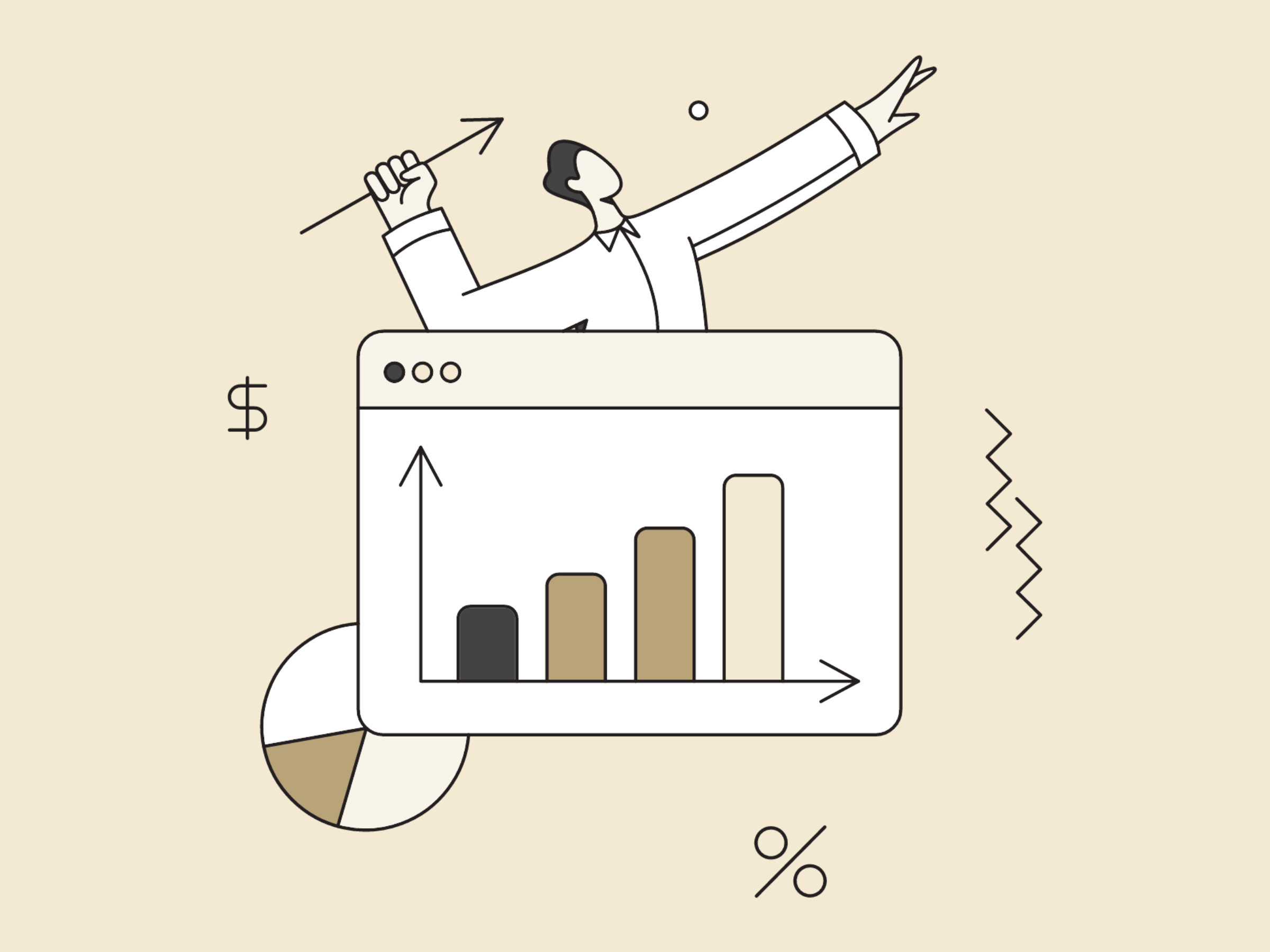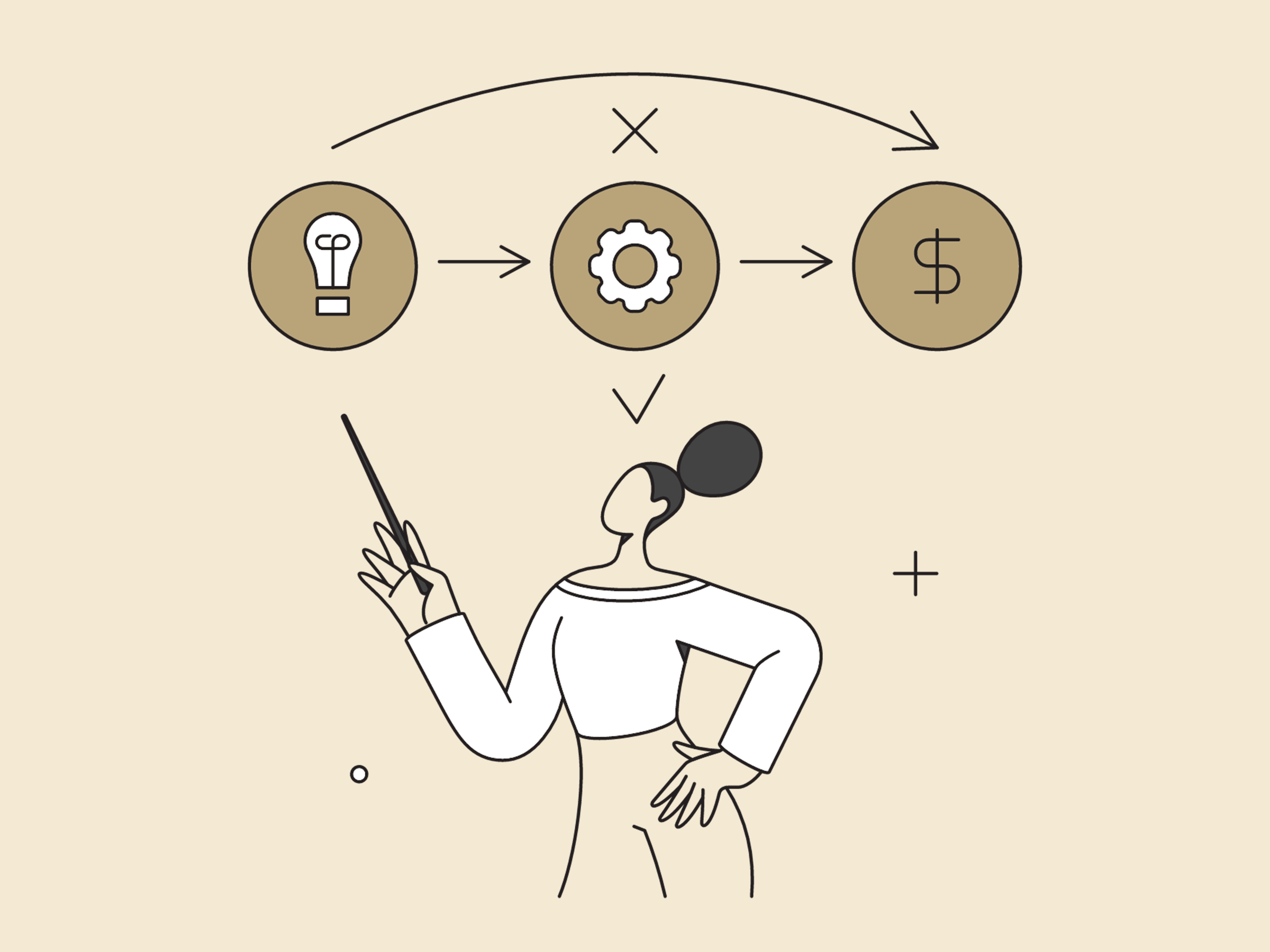Every day we buy things. Retail has been interwoven into our historical fabric for as long as people have engaged in trade. But like any part of history, change is always inevitable. Technology is making us savvier as shoppers. As a result, brand owners face the challenge of fulfilling customers’ needs whenever they decide to buy and competing for relevance among ecommerce giants. Omnichannel retail is one of those buzzwords you hear a lot to describe the evolution of how we now shop.
Omnichannel retail is a modern strategy that enables businesses to maintain a consistent customer experience across all their channels, including brick-and-mortar stores, online marketplaces, and social media platforms. This strategic approach has become increasingly popular as brick-and-mortar retailers move online and ecommerce businesses look for ways to differentiate themselves from their competitors.
This article will provide actionable information about how omnichannel retail can help take your online store to the next level. We’ll address the benefits of using multiple channels to reach potential customers, how to develop an effective omnichannel retail strategy, and the critical steps for implementing these strategies in your business.
The unsexy truth about ecommerce marketing
Ecommerce marketing can be a challenge for many online stores. With so many different channels, strategies and tactics to consider, it can be overwhelming to figure out where to start and how to get the most out of your efforts. Knowing what methods to use and how to make the most of them is critical to success. But it requires much time, research and energy to determine which channels and strategies will be most beneficial for your business.

The biggest problem with ecommerce marketing is that it’s easy to focus on one channel or strategy. For example, many online stores focus solely on SEO, PPC, or social media marketing without considering other options — or how online efforts connect to offline business activities.
Paid promotion is usually a priority for brand owners.
Brand owners often focus on paid channels to ramp up sales. Paid media such as Google Shopping Ads, Facebook or Instagram ads, and other digital advertising forms can effectively drive traffic and sales to an online store. However, there is a limit to how much you can spend on these channels before diminishing returns kick in. Also, brand owners who depend too much on ad networks to bring customers to their stores have complained about sudden dips in online sales when these integrations stop working.
The iOS 14 update and other privacy laws made paid channels less effective for customer acquisition.
The iOS 14 update and other privacy laws have made it increasingly difficult for businesses to acquire customers through paid channels. As a result, many brand owners had to take a step back and reevaluate their customer acquisition strategies. These new regulations force companies to find alternative methods to reach potential customers or risk going out of business. Without the ability to target potential customers with deeply personalised messages, companies must become more creative and think outside of the box regarding marketing. In the current digital landscape, businesses must find the most effective way to attract new customers.
Navigating a customer’s path to purchase isn’t linear.
As you can see from the diagram below, there are many ways to reach customers, convert them into sales and grow your business. But, for every brand, it depends on customers’ varying wants, needs and motivations.
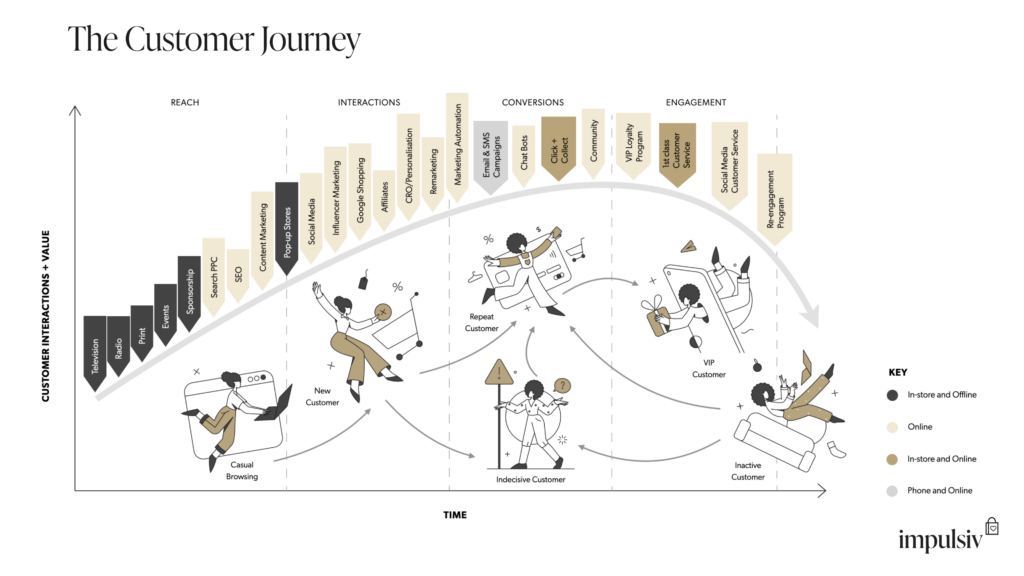
It depends on what you sell, and whether your customers are motivated by the pleasure they get from your brand or the pain of not having it in their lives. Regardless of what some experts will tell you, there will never be a single, definitive way for you to market your brand effectively to your audience.
What is Omnichannel Retail
Omnichannel retail is quickly becoming the go-to strategy for brands looking to convert more customers through online sales channels. By taking advantage of multiple online and offline channels, omnichannel retail allows retailers to create a seamless shopping experience for customers across all touchpoints. For example, retailers with physical stores offer customers a free click-and-collect service for items ordered online to incentivise them to visit their location. Or, they may use in-store marketing to increase online traffic.
Today’s retail landscape is more complex than ever, and online store owners need to consider omnichannel retail as a way to take their business to the next level. Omnichannel retail allows customers to shop in multiple ways, such as through physical and online stores, mobile apps, or social media – such as shoppable posts or Instagram Live Shopping. As a result, businesses can provide a seamless shopping experience across multiple channels. Customers can shop in-store, online, or via mobile devices and purchase through any of these channels. By offering this level of convenience, brands can increase customer satisfaction and loyalty while driving sales.
Why is omnichannel retail a big deal?
Omnichannel retail is an integral part of any online store’s success. It allows customers to shop in multiple ways, from different channels, and provides a seamless experience no matter where they are shopping. As a result, omnichannel retail helps businesses reach more customers, increase sales, and build loyalty with existing customers.
Allowing customers to shop on their terms can lead to higher conversion rates and more satisfied customers. The key to success with omnichannel retail is creating an integrated approach to digital marketing — taking into account marketing activities that occur in the retail environment or offline.
But where to start when you’re short on time – and possibly managing multiple responsibilities? We’ve developed a framework for brand owners to streamline the process, so you can figure out what omnichannel strategies work for your business and build a brand playbook.
Introducing The PRICE Framework
We created The PRICE Framework as a simple method to help small and large businesses take advantage of the fantastic opportunities available from digital marketing. The framework consists of five parts that cover essential activities throughout the customer’s journey:
- Planning
- Reach
- Interactions
- Conversions
- Engagement
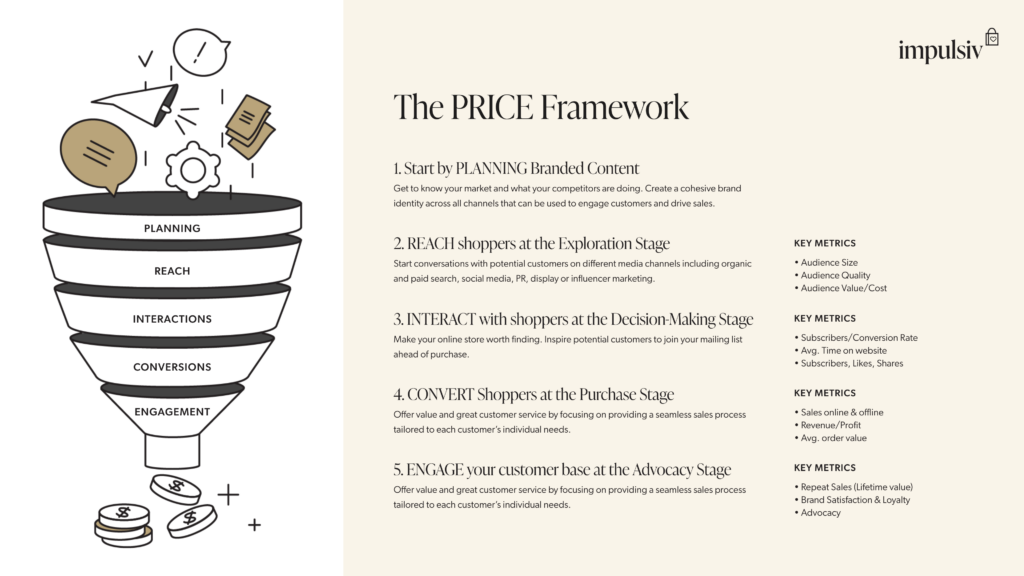
1. Planning branded content
To create an effective digital marketing plan, you need to know what resources you have and what your team’s strengths and weaknesses are. It’s also essential to understand your market and what your competitors are doing. Finally, a clear plan will help you choose what’s vital and create measurable goals and marketing activities.
Branded content is an integral part of any omnichannel retail strategy. It helps create a cohesive brand identity across all channels and can be used to engage customers and drive sales. When planning branded content for your online store, there are several key considerations to keep in mind.
First, consider the type of content you want to create. Do you want to focus on product information, customer stories, or something else? Second, think about the channels you want to use. Will you use social media, email or SMS marketing, or other channels? Third, consider how often you’ll publish content and what type of content will be most effective for each channel. Finally, ensure to measure your content’s success so that you can adjust your strategy as needed.
2. Reach potential customers at the Exploration Stage
Reaching shoppers at the exploration stage involves building awareness of your brand and products on other websites and offline media to build traffic to various web presences like your online store or other online sales channels. The Reach stage typically involves campaigns to start conversations with potential customers on different media channels, including organic and paid search, social media, PR, display or influencer marketing. Establishing your brand’s key messages is essential to building audience recognition, familiarity and purchasing intent.
3. Interact with shoppers at the Decision-Making Stage
At the Decision-making stage, encouraging interactions inspires potential customers to join your mailing list ahead of purchase. Rather than immediately focussing on an immediate sale, inspire interactions with your brand’s content and social media profiles. The intent behind your content should be to persuade shoppers to take the next step on their buying journey, so identify critical ‘moments’ to encourage signups.
4. The Purchase Stage is all about Conversions
This crucial stage of the customer journey is where shoppers transition from browsing to becoming devoted, paying customers. Throughout this process, they are more likely to purchase goods and services that they view as offering value and a great customer experience. It’s here that you must focus on providing a seamless process tailored to each customer’s individual needs. It’s essential to remember that sales transactions can occur offline in a retail location or via ecommerce channels. At this stage, remarketing and automated communications can ensure contextual relevance, brand trust and value for shoppers. In addition, by offering a tailored experience, brands can ensure that customers are more likely to become loyal, returning customers.
5. Engage existing customers at the Advocacy Stage
Customers are great to have, but repeat customers are even better. Keeping customers engaged and happy is vital to creating long-term relationships that will bring lasting success. To achieve this, you must keep adding value to your brand experience so buyers become your company’s advocates. It’s possible to add more value through post-sale nurturing and engagement, such as storytelling, case studies, and engaging social content. By continually providing an excellent customer experience, you can ensure customers come back and spread the word about your brand.
How does The PRICE framework help brand owners?
From our experience, shockingly, most don’t have a digital marketing strategy even though they only sell online. Instead, many use growth hacks or random tactics that line up differently from the rest of the business.
When creating a digital marketing strategy, knowing how to structure it and where to start is sometimes the most significant challenge! There are so many tools and tactics available that it takes time to figure out where to start. The PRICE Framework gives a structure to help you review and prioritise when there are so many options, but some work better than others.
Here are some more benefits:
It’s structured and action-focused
Instead of piecemealing together a strategy from different growth hacks, it focuses on tactics you can implement in your digital marketing communications channels and on your website.
Why growth-hacking isn’t beneficial for long-term growth in retail
Growth hacking is a popular term used to describe the process of rapidly growing a business through creative, low-cost marketing strategies. While it can be an effective tool for quickly boosting sales and increasing visibility, growth hacking is only sometimes beneficial for long-term growth in retail.
Growth hacking often involves short-term tactics such as discounts and promotions to drive sales, but these tactics only sometimes lead to long-term customer loyalty. Additionally, growth hacking can be expensive and time-consuming and doesn’t consistently deliver the desired results.
For long-term success in retail, it’s essential to focus on creating an omnichannel retail experience that will make it easier for customers to purchase from you.
It’s customer-centric
It follows the established customer lifecycle of relationship building or marketing funnel from creating awareness; generating leads from new prospects; converting prospects to sales (online or offline), and encouraging loyalty, repeat sales and advocacy.
The difference between a Customer Focus vs a Product Focus
When taking your online store to the next level, it is essential to understand the difference between customer and product focus. A customer focus means that you are focused on providing an excellent customer experience. In contrast, a product focus means that wants and needs may be secondary to cool product features they don’t necessarily need.
A customer-focused approach is about understanding what customers desire from their shopping experience. For example, customers might want you to provide customer service through social media, offer more colour options, or provide personalised recommendations on your website based on their specific needs.
Why should brands focus on their customers?
In today’s competitive retail landscape, brands must focus on their customers to stay ahead of the competition. In addition, customers are increasingly expecting a seamless shopping experience across multiple channels, and brands that can provide this will be well-positioned to take their brand to the next level.
By focusing on customer-centric strategies such as providing helpful customer service, offering a wide selection of products, and creating an easy-to-navigate website, brands can create an omnichannel retail experience that will help them stand out from the competition and boost customer loyalty.
We built the framework to support omnichannel retail.
Offline contact is an essential element of PRICE, particularly concerning ‘Conversion’, as it often takes person-to-person interaction to finalise sales. In addition, various online businesses rely on this contact to acquire and retain customers.
It’s data-driven
By incorporating measurable goals, analysis of data and summary reports, digital marketers can use data-driven techniques to optimise their marketing plan.
How to create an omnichannel retail strategy with The PRICE Framework
Developing an effective omnichannel retail strategy requires thoughtful planning and execution. Here are some critical steps you to take when developing your plan:
Identify Your Target Audience
Identifying your target audience is an essential step in omnichannel retail. Knowing whom you are targeting will help you create a more effective marketing strategy and determine which channels and platforms are best suited for reaching them. When identifying your target audience, consider factors such as age, gender, location, interests, and income level.
Review the current state of your digital marketing
The next step is to review the current state of your digital marketing. This review should evaluate how you reach out to new and existing customers through paid and owned channels such as email, SMS, social media, search engine optimisation (SEO), and pay-per-click advertising. It’s essential to understand what is working and what isn’t so that you can make the necessary changes to improve your digital marketing strategy.
Create a plan of action
Once you have identified your target audience and reviewed the current state of your digital marketing, it’s time to create a plan of action. Your plan should include measurable goals, developing an effective content strategy, and ensuring your omnichannel retail experience meets customer needs.
Create a Seamless Shopping Experience
Creating a seamless shopping experience across all channels is essential to an omnichannel retail strategy. A seamless experience means ensuring that customers have a consistent experience no matter which channel they choose to shop with you and sharing data across channels where possible.
A recent case study on the footwear brand Allbirds reveals how the once online-only company became a true retail darling thanks to omnichannel retail – using Shopify’s buy-in-store, ship-to-customer technology.
Instead of relying on customers to check themselves out online, if a customer arrived at one of its locations seeking a unique product, an Allbirds associate could process the transaction in-store, taking payment and communicating with its warehouse to ship the shoes directly to the shopper.
And if that customer had previously shopped with Allbirds either online or in-store, the company would have shipping and billing information accessible from all its channels, speeding up the transaction and improving the customer experience that much more.
To create a seamless shopping experience, consider factors like product availability, pricing consistency, payment options, and shipping policies.
Ready to take your online store to the next level?
In conclusion, taking your online store to the next level with omnichannel retail requires careful planning and execution. One thing to keep in mind when creating an omnichannel strategy is that there isn’t one way to reach customers at any stage of the customer journey. Instead, you only need to find the ones that work for your customers at each stage of their journey.
By focusing on the five elements of The PRICE Framework, you can create an effective omnichannel retail strategy to help you reach your target audience and increase sales. Additionally, creating a seamless shopping experience across all channels is essential for providing customers with a consistent and enjoyable experience.
